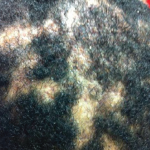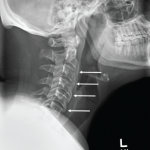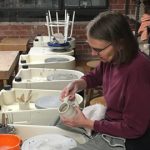Dr. Ferguson said the evidence on biologics indicates the greatest benefit on bone and joints (less on skin) occurs with anti-tumor necrosis factor agents.4
A Genotype-First Diagnosis
Dan Kastner, MD, PhD, the scientific director of the National Human Genome Research Institute, Bethesda, Md., discussed a recently published study in which researchers used a novel approach to identify a new, undiagnosed inflammatory disease. This approach was taken to help resolve the many cases of undiagnosed autoinflammatory disease. To date, he said, of the 3,000 people in the U.S. National Institutes of Health autoinflammatory disease cohort, only 1,000 have a diagnosis.
In the new study, Beck and colleagues used a genotype approach to identify a new disorder shared by adults who clinically manifested and were diagnosed with a variety of apparently unrelated inflammatory disorders.5 In total, they identified 25 men diagnosed with various diseases (i.e., relapsing polychondritis, Sweet’s syndrome, myelodysplastic syndrome, multiple myeloma, polyarteritis nodosa and giant cell arteritis) who shared underlying somatic mutations in a protein coding gene (UBA1). The researchers called this new syndrome VEXAS, which stands for vacuoles, E1 ubiquitin-activating enzyme, X-linked, autoinflammatory and somatic syndrome (see ).
“Using a genotype-first strategy, one can define new illnesses based on genetic variants shared among patients carrying distinct clinical diagnoses,” said Dr. Kastner, adding that this approach may result in a new molecular taxonomy of rheumatic disease. He also emphasized that somatic variants for genes encoded on the X-chromosome (such as those found underlying VEXAS) are probably under-recognized, and that somatic mutations may account for a significant fraction of adult-onset inflammatory disease.
Mary Beth Nierengarten is a freelance medical journalist based in Minneapolis.
References
- Kahn MF. (October 2003). Proposed classification criteria of SAPHO syndrome. American College of Radiology.
- Hayem G, Bouchaud-Chabot A, Benali K, et al. SAPHO syndrome: A long-term follow-up study of 120 cases. Semin Arthritis Rheum. 1999 Dec;29(3):159–171.
- Liu S, Tang M, Cao Y, et al. Synovitis, acne, pustulosis, hyperostosis, and osteitis syndrome: Review and update. Ther Adv Musculoskel Dis. 2020 May 12;(12):1–14.
- Daoussis D, Konstantopoulou G, Kraniotis P, et al. Biologics in SAPHO syndrome: A systematic review. Semin Arthritis Rheum. 2019 Feb;48(4):618–625.
- Beck DB, Ferrada MA, Sikora KA, et al. Somatic mutations in UBA1 and severe adult-onset autoinflammatory disease. N Engl J Med. 2020 Dec 31;383(27):2628–2638.



